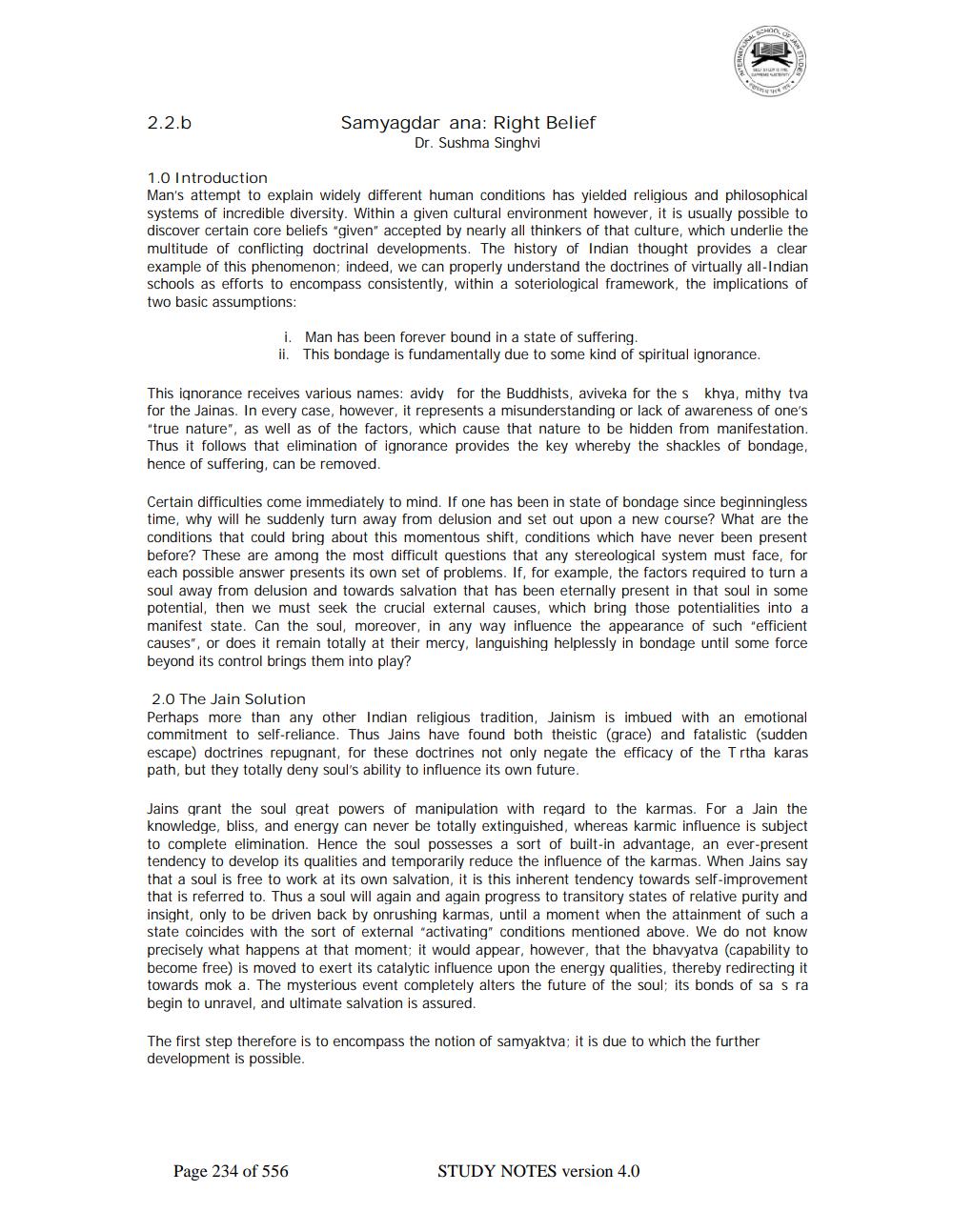________________
2.2.b
Samyagdar ana: Right Belief
Dr. Sushma Singhvi
1.0 Introduction Man's attempt to explain widely different human conditions has yielded religious and philosophical systems of incredible diversity. Within a given cultural environment however, it is usually possible to discover certain core beliefs "given" accepted by nearly all thinkers of that culture, which underlie the multitude of conflicting doctrinal developments. The history of Indian thought provides a clear example of this phenomenon; indeed, we can properly understand the doctrines of virtually all-Indian schools as efforts to encompass consistently, within a soteriological framework, the implications of two basic assumptions:
i. Man has been forever bound in a state of suffering. ii. This bondage is fundamentally due to some kind of spiritual ignorance.
This ignorance receives various names: avidy for the Buddhists, aviveka for the skhya, mithy tva for the Jainas. In every case, however, it represents a misunderstanding or lack of awareness of one's "true nature", as well as of the factors, which cause that nature to be hidden from manifestation. Thus it follows that elimination of ignorance provides the key whereby the shackles of bondage, hence of suffering, can be removed.
Certain difficulties come immediately to mind. If one has been in state of bondage since beginningless time, why will he suddenly turn away from delusion and set out upon a new course? What are the conditions that could bring about this momentous shift, conditions which have never been present before? These are among the most difficult questions that any stereological system must face, for each possible answer presents its own set of problems. If, for example, the factors required to turn a soul away from delusion and towards salvation that has been eternally present in that soul in some potential, then we must seek the crucial external causes, which bring those potentialities into a manifest state. Can the soul, moreover, in any way influence the appearance of such "efficient causes", or does it remain totally at their mercy, languishing helplessly in bondage until some force beyond its control brings them into play?
2.0 The Jain Solution Perhaps more than any other Indian religious tradition, Jainism is imbued with an emotional commitment to self-reliance. Thus Jains have found both theistic (grace) and fatalistic (sudden escape) doctrines repugnant, for these doctrines not only negate the efficacy of the T rtha karas path, but they totally deny soul's ability to influence its own future.
Jains grant the soul great powers of manipulation with regard to the karmas. For a Jain the knowledge, bliss, and energy can never be totally extinguished, whereas karmic influence is subject to complete elimination. Hence the soul possesses a sort of built-in advantage, an ever-present tendency to develop its qualities and temporarily reduce the influence of the karmas. When Jains say that a soul is free to work at its own salvation, it is this inherent tendency towards self-improvement that is referred to. Thus a soul will again and again progress to transitory states of relative purity and insight, only to be driven back by onrushing karmas, until a moment when the attainment of such a state coincides with the sort of external "activating" conditions mentioned above. We do not know precisely what happens at that moment; it would appear, however, that the bhavyatva (capability to become free) is moved to exert its catalytic influence upon the energy qualities, thereby redirecting it towards mok a. The mysterious event completely alters the future of the soul; its bonds of sa s ra begin to unravel, and ultimate salvation is assured.
The first step therefore is to encompass the notion of samyaktva; it is due to which the further development is possible.
Page 234 of 556
STUDY NOTES version 4.0




